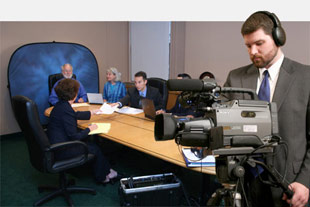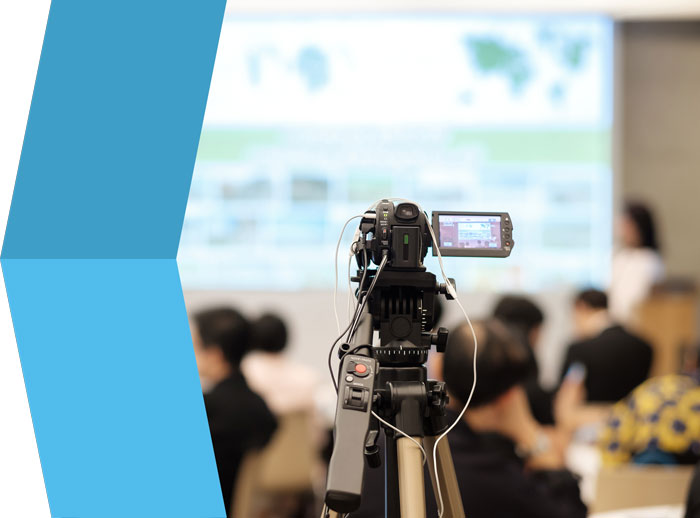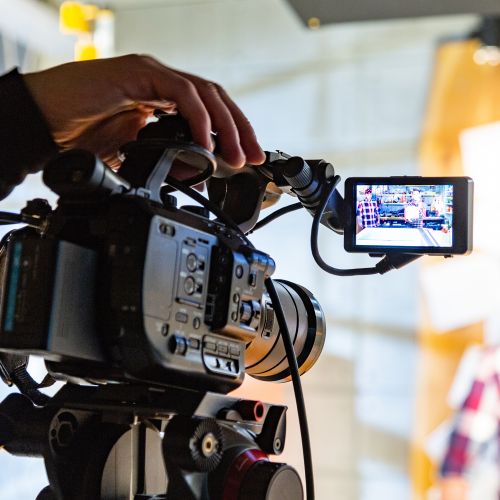How Legal Videography Can Make or Break Your Legal Approach
How Legal Videography Can Make or Break Your Legal Approach
Blog Article
Looking Into the Mechanisms of Legal Videography: Unveiling Its Procedure in Safeguarding Genuine Aesthetic Statement for Judicial Process
In the world of judicial procedures, the duty of lawful videography stands as a cornerstone in maintaining and providing visual evidence. As technology proceeds to advance, the systems behind legal videography have come to be progressively complex, supplying a vital layer of authenticity to testaments recorded on video. By diving into the functional details of lawful videography, one can reveal the meticulous processes that protect the integrity of aesthetic evidence offered in courtrooms - Legal Videography. This exploration not only clarifies the historical evolution of legal videography however also means the future fads that might better transform how visual testaments are promoted in the world of justice.
Historical Advancement of Lawful Videography
Checking out the historic development of legal videography exposes a substantial transformation in the catching and discussion of visual evidence within the lawful landscape. In the past, legal process heavily counted on written transcripts and photos to record events and give evidence. Nonetheless, with the advent of video innovation, the legal industry witnessed a paradigm change in exactly how visual testament was captured and offered.
The evolution of lawful videography can be traced back to the late 20th century when developments in video recording equipment made it much more accessible for use in courts. This technical advancement not only boosted the accuracy and reliability of visual proof yet additionally revolutionized the method cases were presented to discretionary (Legal Videography). Attorneys started to acknowledge the convincing power of video recordings in conveying emotions, nuances, and non-verbal cues that created photographs or transcripts alone can not capture effectively

Modern Technology Advancements in Video Documentation
What crucial technical advancements have transformed video clip documentation in the lawful field? The lawful area has actually seen considerable developments in video clip documentation innovation that have boosted the authenticity and dependability of aesthetic proof in judicial procedures. One of the vital advancements is high-def (HD) video clip recording capabilities, which supply crystal-clear images and sharp details that are important for precisely capturing testimonies, faces, and other visual signs. Additionally, the assimilation of timestamping and metadata attributes in video clip documentation tools has actually allowed accurate documents of when and where the video was tape-recorded, guaranteeing the integrity of the proof presented in court.
In addition, advancements in video encryption and watermarking innovations have strengthened the security and tamper-proof nature of video evidence, guarding it against unauthorized changes or meddling. The arrival of cloud storage remedies and remote access abilities has structured the storage, retrieval, and sharing of video evidence, assisting in smooth collaboration amongst lawful specialists and ensuring effective accessibility to vital aesthetic testaments when needed. These technological advancements in video clip documentation have most certainly revolutionized the lawful area, boosting the accuracy, reliability, and admissibility of visual evidence in judicial procedures.
Duty of Lawful Videographers in Court Setups
The development of video clip documents modern technology in the lawful field has demanded a critical role for lawful videographers in court settings, making certain the stability and dependability of aesthetic testaments presented during judicial process. Legal videographers play a fundamental duty in capturing and preserving accurate aesthetic proof that can be essential in lawsuit. Their duty encompasses setting up devices, tape-recording proceedings, and generating high-quality videos that properly show the occasions in the courtroom.
In courtroom settings, legal videographers have to follow strict guidelines and criteria to keep the authenticity of the visual record. They must possess a keen eye for detail and a complete understanding of legal procedures to ensure that the video footage they record is a true representation of the events that transpired. Furthermore, legal videographers usually function carefully with lawful teams to ensure that the video clip evidence straightens with the situation's needs and can be properly provided in court to support the lawful debates being made. Generally, the function of lawful videographers in courtroom setups is essential in maintaining the concepts of justice and making sure the openness of legal process.

Ensuring Admissibility and Stability of Video Evidence
To maintain the trustworthiness of aesthetic evidence provided in legal proceedings, making certain the admissibility and honesty of video clip evidence is a critical obligation for lawful videographers. Admissibility describes the acceptance of evidence by the court, and explanation for video clip evidence to be permissible, it must fulfill certain standards. Legal videographers play a vital duty in making sure that the videos they record conform with the rules of evidence, such as authenticity, integrity, and importance.
Stability of video clip proof includes preserving the originality and accuracy of the video from the moment it is tape-recorded until it exists in court. This consists of firmly storing the video clip data, recording the chain of wardship, and preventing any tampering or alterations. Lawful videographers need to comply with rigorous protocols to ensure the integrity of continue reading this the video clip proof and stop any type of challenges to its credibility.
Future Trends in Legal Videography
Offered the enhancing reliance on technology in legal process, lawful videographers are positioned to embrace cutting-edge advancements shaping the future of visual testimony capture and discussion. Among the noticeable fads coming up is the combination of online fact (VR) and increased fact (AR) innovations into legal videography. These innovations have the prospective to revolutionize how visual evidence exists in court rooms, allowing courts and juries to submerse themselves in the scene of the criminal activity or event.
Furthermore, the usage of expert system (AI) algorithms for video analysis is anticipated to streamline the procedure of examining and analyzing big amounts of video clip footage. AI can assist in determining crucial minutes, abnormalities, and patterns within videos, boosting the efficiency of lawful investigations.

Final Thought
In conclusion, lawful videography has played a vital function in giving authentic visual evidence for judicial process. Through technological innovations and the proficiency of lawful videographers, the integrity and admissibility of video clip evidence are ensured in court settings. As legal videography continues to progress, it will certainly be necessary to support criteria that keep the accuracy and dependability of aesthetic testimony for the future of legal process.
Checking out the historical development of lawful videography discloses a considerable makeover in the capturing and discussion of aesthetic proof within the lawful landscape.The evolution of video clip paperwork innovation in the legal field has actually required an important role for lawful videographers in courtroom setups, ensuring the integrity and dependability of aesthetic statements offered during judicial process. Additionally, lawful videographers frequently function carefully with lawful teams to make certain that the video clip evidence straightens with the instance's needs and can be successfully presented in court to support the legal arguments being made.To keep the reliability of aesthetic evidence offered in legal process, ensuring the admissibility and honesty of video clip evidence is a critical obligation for legal videographers. As lawful videography continues to advance, it will certainly be essential to copyright requirements that keep the accuracy and my explanation reliability of aesthetic testament for the future of legal process.
Report this page